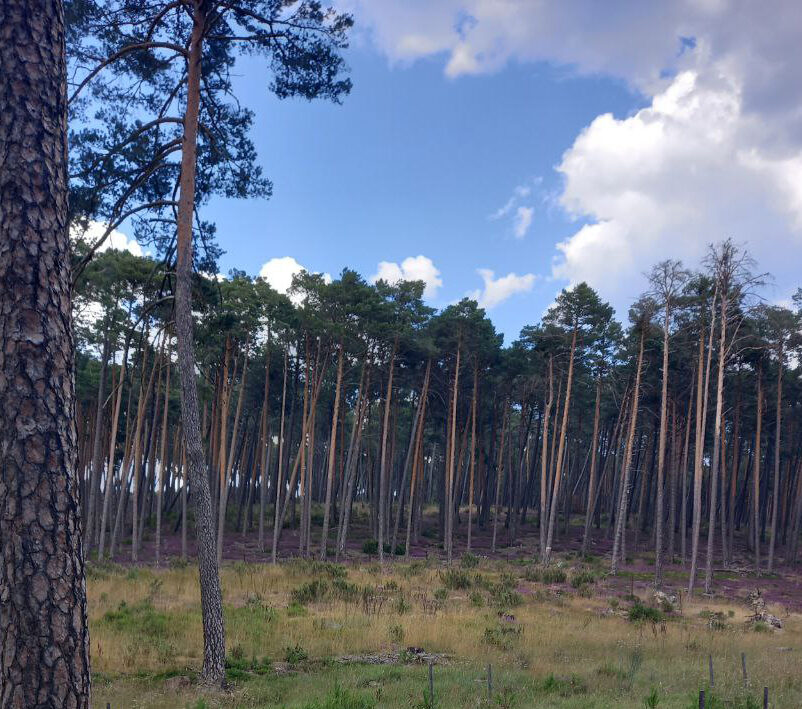Clear-cutting trees is a practice as old as civilisation and has an obvious effect on forest stands. Much less well known is the effect this practice has on life below ground, on fungi. A study led by Giada Centenaro, a researcher at the University of Lleida and the CTFC-Agrotecnio-CERCA joint research unit, together with seven other researchers, has analysed the effects of clear-cutting on the distribution, composition and biomass of saprophytic and mycorrhizal fungi. The study was carried out in a wild pine forest in the so-called “Pinar Grande” in the province of Soria, more than 12,500 hectares of forest above 1,000 metres altitude, with a Mediterranean climate with continental characteristics.
In the soil, fungi live forming networks of filaments called “fungal mycelium” whose mission is to search for nutrients. Saprophytic fungi decompose organic matter to feed themselves (from dead leaves or fallen branches, for example), while mycorrhizal fungi create a symbiosis with tree roots through which they exchange nutrients for carbon. Thus, removing the forest canopy will lead to variations in the availability of resources for fungi, which may affect the composition and diversity of soil fungal communities. So, is it a bad thing to cut down trees?
To analyse the changes of logging on soil fungi, a spatial sampling of the soil was carried out, starting from the forest interior and ending in the centre of three clear-cut areas, each half a hectare in size. In each of the three logged areas, 60 soil samples were taken for the characterisation of the soil fungal community. On these 180 soil samples, fungal DNA was extracted and the fungal species present were identified, as well as the fungal biomass in the soil.
Centenaro’s publication has shown that, although fungal biomass is lower in the logged area compared to the forest or site perimeter, fungal diversity has remained similar in all areas. The study has shown that small-scale clear-cutting treatments of less than half a hectare do not generate negative impacts on soil fungal communities in the medium term. In other words, the fungal communities within the logged areas and also at the forest edge are comparable to the fungal communities found inside the forest.
“These findings are important from a forest management point of view because they show that the forest can be managed without causing irreversible damage to the ecosystem,” says Centenaro, who also highlights the importance of new technologies in achieving these results: “20 years ago, to study fungi you had to go to the forest in specific seasons and identify the visible mushrooms. With the new technologies, it is possible to have a better idea of the composition of the fungal communities”.
This research has been conducted in the framework of the project “Factores ambientales y antropogénicos determinantes de la biodiversidad y productividad de hongos en ecosistemas forestales frente al cambio global” (FUNFORCHANGE) funded by the Ministerio de Ciencia e Innovación y la Agencia Estatal de Investigación (PID2022-139558OB-I00) and led from the CTFC by Sergio de Miguel, head of the Global forest ecosystem research group.
Further information:
Centenaro, G.; de-Miguel, S.; Bonet, J.A.; Martínez Peña, F.; Escribano Gil De Gomez, R.; Ponce, A.; Dashevskaya, S.; Alday, J.G. Spatially-explicit effects of small-scale clear-cutting on soil fungal communities in Pinus sylvestris stands, Science of The Total Environment, Volume 909, 2024, 168628 https://doi.org/10.1016/j.scitotenv.2023.168628
Last modified: 19 July 2024










